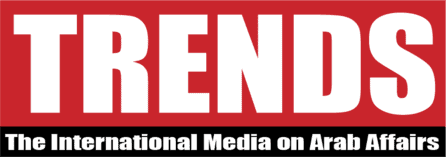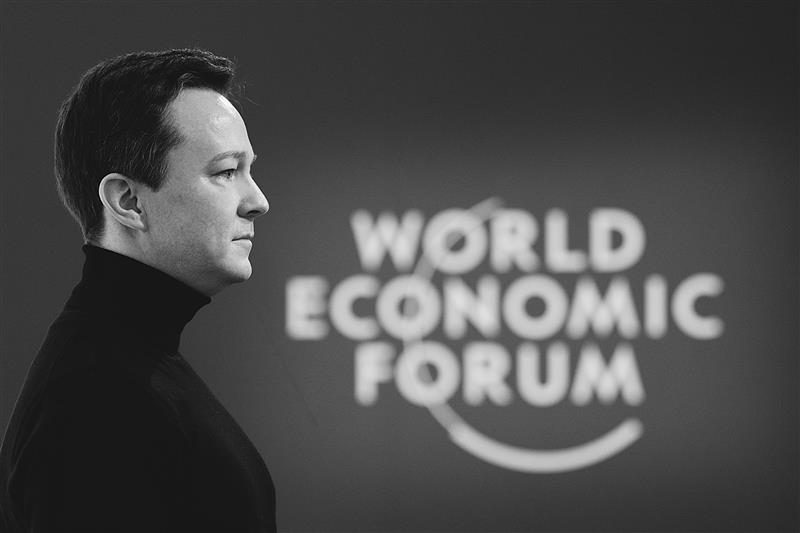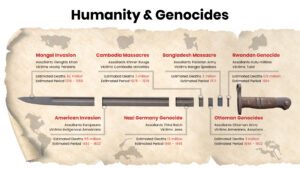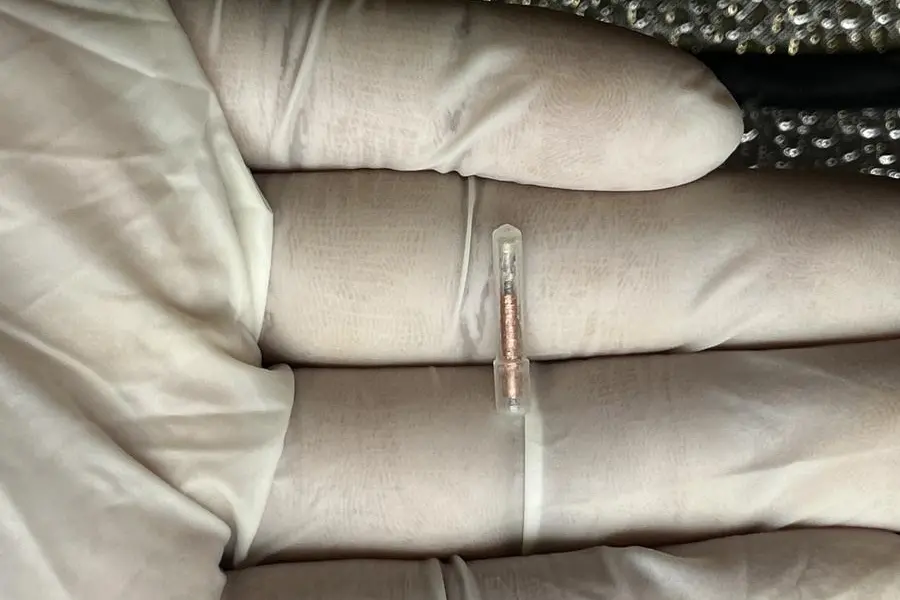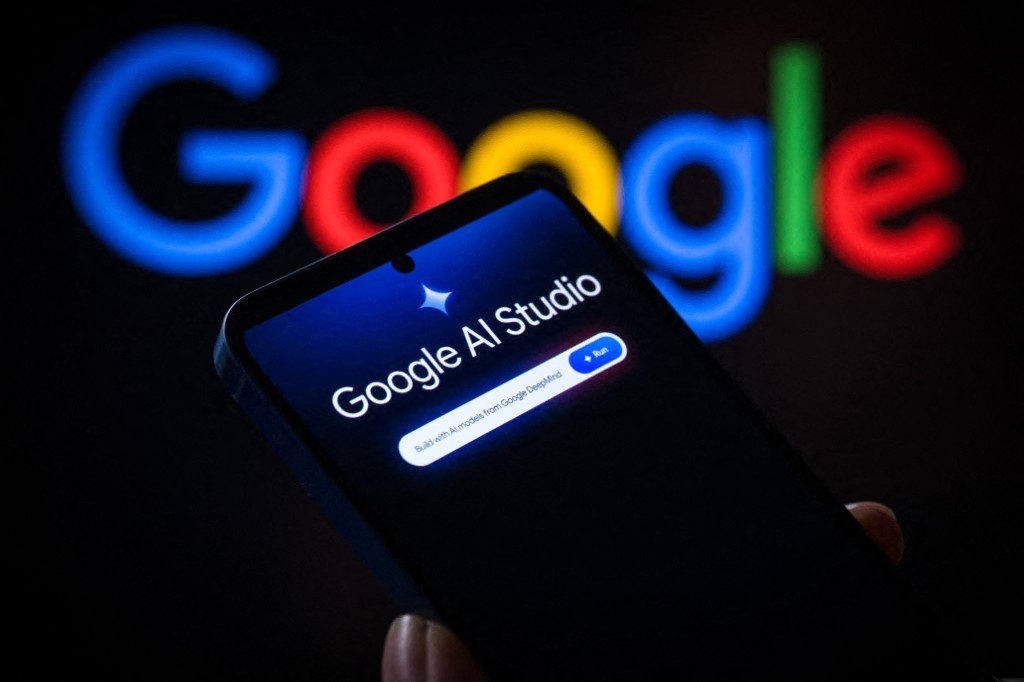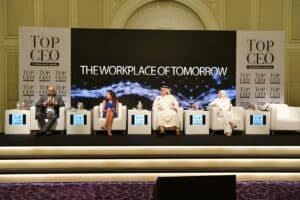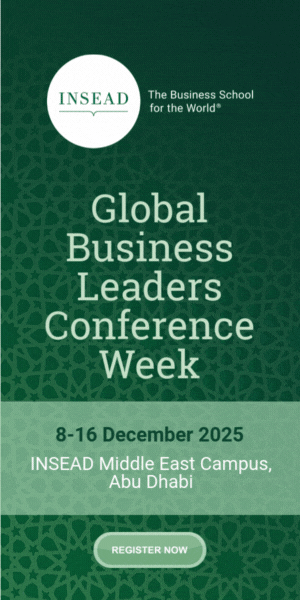Davos, Switzerland — In an age where artificial intelligence is reshaping our lives, the World Economic Forum’s Arts and Culture program showcased the cohabitation of technology and human creativity with a key focus on our shared humanity. TRENDS sat down with Joseph Fowler, Head of Arts and Culture at the World Economic Forum, to explore the role art and culture play in the Intelligent Age.
What have been some of the ideas and collaborative touchpoints this week in Davos? What is the role of art in the WEF platform?
Arts and culture sit at the heart of the work of the World Economic Forum. The overarching theme of this year’s annual meeting in Davos is “Collaboration for the Intelligent Age.” While one might expect the Arts and Culture program to focus solely on tech and innovation—the essence of the intelligent age—we explored not only those areas but also what it means to be human in this age. We considered human creativity, sensitivity, intelligence, compassion, and empathy, conveying these through the Arts and Culture program. We have five exhibitions, including one by Sougwen Chung, a pioneer in machine-human collaboration. Wearing an EEG headset that reads her brain waves, she uses a program that translates these waves into triggers for robotic arms, which then paint. She becomes a conduit for creativity, prioritizing technology while remaining behind it. The result is a beautiful installation showcasing the robotic arms painting, a creative expression of machine-human collaboration, and a unique interpretation of our overarching theme.
This creative space then serves as a springboard for conversations about the collaboration between technology and humans, how we integrate it into our lives, the evolving landscape, and the future of technology, particularly AI. We discussed the authentication of art using AI, copyright protection, and how artists explore creativity with AI as a tool. Simultaneously, we examined how AI can protect creativity, copyright, and ownership. These discussions explored the necessary frameworks and guardrails. Then we lean into the other end of the spectrum.
We are also showcasing fiber art by Gary Tyler. Accused of a crime he didn’t commit at age 16 (in 1974), this American artist was incarcerated for 42 years, and freed just over four years ago. In prison, he used art as a tool for survival. While on death row, he turned to art, drama, music, and literature, particularly pencil drawing and fiber art. We were fortunate to exhibit three of his fiber art pieces. This handcrafted work highlights the human story, addressing social justice and demonstrating how art is not only a tool of expression but also survival. These two examples illustrate the breadth of collaboration and how we addressed our overarching theme in Davos this year.
What were you looking at specifically when curating those collaborative experiences, particularly for this year in Davos? How are art and culture interwoven with the forum’s overarching topic?
We do two things. One is ensuring we have a comprehensive, world-class art program throughout the annual meeting manifested through our exhibitions. We have our Crystal Awards, our opening concert, and smaller performances throughout the week. We also have sessions integrating our cultural leaders into the program. When curating, we aim for a robust arts and culture program and consider how art and culture articulate the forum’s topics and focus areas, not only throughout the year but specifically in Davos. How are we responding to and supporting the ongoing conversations, creating gateways into them? What makes art and culture unique is their ability to convey emotional messages, injecting emotion into these discussions. When discussing climate change and the climate crisis, scientific facts, data, and statistics are vital but can be impersonal.
However, when combined with artistic expressions, an emotional narrative emerges. When addressing a topic with global impact like climate change, you approach it not only from a factual and data-driven perspective but also from an emotional and visual one. This changes the exchange and, consequently, the outcome.
What conversations, narratives, and interactions are you taking home as a memory from here, from Davos 2025?
I’m taking away many things. Primarily, the diversity within the cultural space. Our invited artists and creatives—whom we call cultural leaders—were particularly diverse this year. We had Gary Tyler, now living in Los Angeles, who was incarcerated for 42 years and freed several years ago. We had Melanie B, formerly of the Spice Girls, who spoke about domestic violence. She is a victim of domestic violence herself. She’s written the best-selling book Brutally Honest and articulated this serious topic beautifully. We also had Cristina Mittermeier, the Mexican marine biologist, scientist, conservationist, and award-winning photographer, who took us underwater and above land in her immersive exhibition. To answer your question directly, using these three as examples, I’m taking away their conversations, their sessions, and what we learned from listening to them. It truly demonstrated that art and creative expression are powerful ways to approach sometimes complex themes, topics, and subject matter.
When coming at it through a cultural lens, you’re immediately entering through the emotional door. You’re talking on a very different level, using a very different vocabulary than coming at it from someone who either hasn’t experienced it or is approaching it from a very factual or sometimes maybe quite a cold angle. When you’re hearing from someone who’s talking about a personal experience, nothing really beats that. This year, one of the main takeaways is the power of storytelling through art.
How can arts and culture be used as tools for cultural diplomacy or soft power to build bridges? Today, one of the key topics at the forum was the fragmented socio-geolocational and socio-economic environment. How can human-centric art and culture storytelling amplify messages to a larger audience?
We had a wonderful collaboration with an organization called Artolution – a nonprofit based in the US. They focus on visual art as a means of articulating and exteriorizing the emotional challenges of displaced and forcibly displaced people. We commissioned four large-scale murals from four different refugee communities in four different parts of the world. Those four murals were then brought to Davos, and we assembled them to make one large mural. That really was an incredibly powerful piece of art made by children. I gave each of the four communities the same prompt: Where do you come from, where are you now, and where do you dream of going? These murals, one might think, could be quite sad. A lot of these children have lost their families. These children, as young as four, five, and six years old, don’t know where their parents are. They don’t know where their brothers and sisters are. They’ve been forcibly displaced. These murals were full of color, joy, optimism, and hope. We created a link between the four communities through Zoom calls.
These children were meeting other children from an entirely different part of the world who were in a very similar situation. They felt connected, and they were creating art in different parts of the world. We brought these artworks together, and we created a very powerful, large-scale mural, which then led to very, very meaningful and robust conversations about people who are forcibly displaced. This also ensured we don’t dehumanize these people… these children. They have dreams, they have aspirations, like anyone else. And by having these murals in the heart of the Congress Center, their voices were brought into the Congress Center. That really is a very concrete project, which I think made a huge statement about the power of visual art.
Going back to your experience with Expo 2020 and other engagements in Dubai, what technologies are you excited about that are going to transform the way art and culture add value to a more connected and more collaborative world?
Dubai was my home for 11 years. The UAE is extremely forward-thinking. So they absolutely have a finger on the pulse when it comes to technology and how technology can be integrated into everyday life, not only the art space but everyday life. When it came to the World Expo, there was a very strong focus on the integration of technology. The Expo was delayed a year because of the global pandemic. Actually, that was a blessing in disguise from an arts and culture perspective at Expo because it allowed us to rethink how one consumes a structured experience.
We really had reflected upon the integration of technology. We created a far more robust online experience for participants coming to the Expo. We integrated it into our guest experience, and how visitors were welcomed. We had guest robots, and the guest robots were completely revisited and revised. What they did, what they said, where they went, what they offered. We had a passport program, which was a physical passport. We also created a digital passport. The UAE is a very exciting place when it comes to technology, particularly in the arts. There’s the Museum of the Future, of course, in the UAE, which focuses on exactly that: how technology is the future.
Technology is an opportunity for creative expression. We just need to make sure we have the right protective frameworks and guardrails in place. But I think it’s a super exciting time for arts and culture, and Dubai and the UAE are doing a fantastic job.
Where do you see emerging talent?
In the MENA region and the UAE in particular. Saudi Arabia is extremely exciting at the moment with the focus they’re placing on culture. The UAE placed a huge focus on culture and cultural development. I had the great opportunity to sit down with Her Highness Sheikha Latifa bint Mohammed bin Rashid Al Maktoum here in Davos. Of course, she’s the Head of Dubai Culture and Arts Authority, and we had a wonderful conversation of nostalgia, looking back on the Expo and the future. She is an incredible woman with an immense vision for arts and culture in the UAE.
Al Quoz (Creative Zone) in Dubai is a super exciting cultural space, which is constantly growing. The UAE Golden Visa, which allows artists and creatives to take residence in the UAE, contributes in a big way to the ecosystem of arts and culture in the UAE. It’s also exciting to see how Saudi Arabia is embracing and using arts and culture, not only to drive future innovation, particularly through digital art and installations where they are at the forefront, but also to articulate their heritage.
